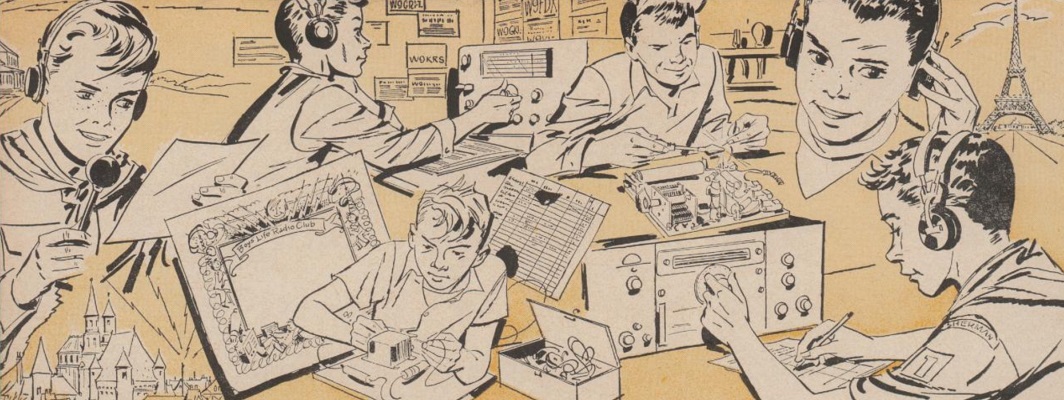From The Smithsonian: Natural Museum of American History web site
For nearly a century, amateur radio operators (HAMs) have energized the airwaves around the world. Exploring radio science and technology, providing emergency communications, or simply “calling CQ” to chat, HAMs are part of radio history. At the Museum’s HAM radio station, NN3SI, visitors learn about radio while they watch and talk with volunteer HAMs operating the station.
The unusual call sign, NN3SI, comes from the station’s origin in the Museum’s bicentennial exhibition “A Nation of Nations.” The FCC assigned a temporary call NN3SI for Nation of Nations-US zone 3-Smithsonian Institution, and later granted a request to make the call permanent.
The station participates in special events. During the dedication of the World War II Memorial on the National Mall, station operators made many contacts and taught children visiting the Museum how to spell their names in Morse code. Over the years, operators at NN3SI have logged contacts with HAMs in all parts of the world and with astronauts and cosmonauts in orbit.
The station operates on a range of frequencies from 3.5 to 450 MHZ. Licensed HAMs planning a trip to Washington, D.C., can sign up to operate the station during their visit.

Smithsonian Secretary S. Dillon Ripley (at left), ARRL President Harry Dannals and operator Joseph Fincutter inaugurate station NN3SI in July 1976.

Volunteer operators Stan Schretter (at left) and Don Sylvain making contacts during the 2004 Memorial Day weekend.
… I sent an email an asked how I’d go about arranging an appointment to be a guest operator at NN3SI and got the following response:
From : Carl Lagoda
Sent : Thursday, December 1, 2005 8:52 PM
To :
Subject : Re: NN3SI
Hello Scott:
You are certainly welcome to visit NN3SI and , while there, operate the station as a guest operator. We only ask that you present a photo ID to identify yourself. As you probably already know, the station is located in the National Museum of American History. I suggest that you enter the building by the Constitution Avenue entrance. NN3SI is in an exhibit called “Information Age”. The duty operators are there between 10am and 3pm with time out for lunch. Since the station depends on volunteer operators, we do not have continuous coverage so that you may not find an operator on duty. If you could name a specific date and time for your visit, we will try to have someone there for you. Regards de Carl w3cl
Maybe I can take a quick trip up to D.C. in late December when work slows down a bit. I think it would be really neat to be a guest operator at the Smithsonian’s amateur radio station! 🙂


